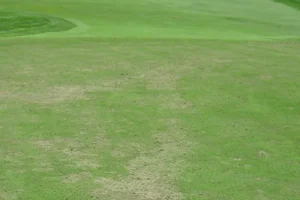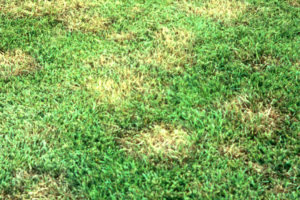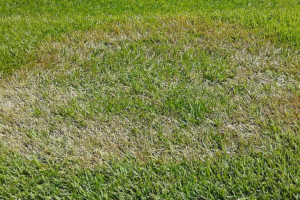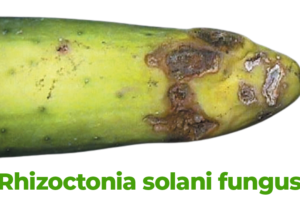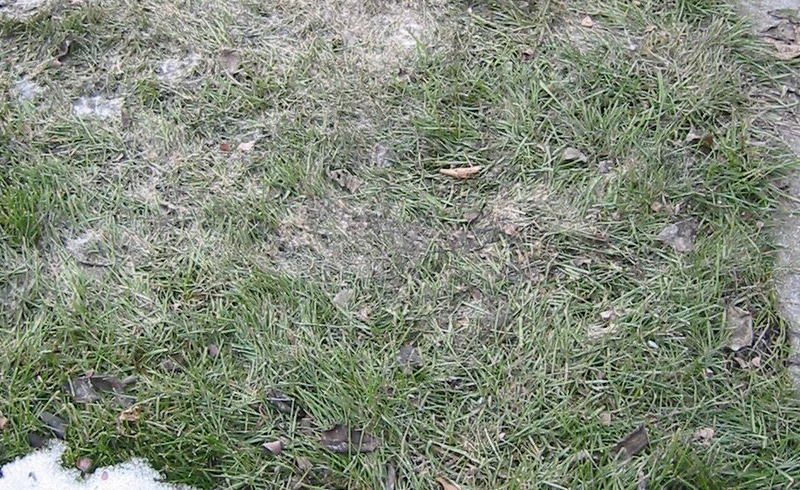
Introduction
The Importance of Understanding Diseases in Cold Climate Grasses
For many homeowners, a lush, green lawn symbolizes pride and a testament to their hard work. But maintaining that pristine look, especially in colder climates, isn’t always a walk in the park. Cold climate grasses are hardy against the chill and susceptible to various diseases that mar their beauty and health. These diseases, often sneaky in their onset, can quickly spread, turning a once-green oasis into a patchy, discolored mess. That’s why understanding these diseases, their symptoms, and their effects is crucial. With knowledge comes the power to prevent, treat, and ensure that your lawn remains the envy of the neighborhood.
Selecting the Right Grass Type for Cold Climates
You might wonder, “Isn’t all grass just… grass?” Well, not quite. There are numerous grass types, each with its characteristics, benefits, and vulnerabilities. For those living in colder regions, choosing the right grass adapted to the chill is the first step in ensuring a healthy lawn. But even the hardiest of cold climate grasses have their Achilles’ heel. Diseases can strike when you least expect them, exceptionally if the grass isn’t cared for properly. That’s why, besides selecting the right grass type, it’s essential to be aware of the potential diseases that can affect them. This way, you’re not just reacting to problems; you’re anticipating them, armed with the knowledge to tackle them head-on.
In the following sections, we’ll dive deep into the world of cold climate grass diseases, shedding light on their symptoms, the grass types they affect, and the solutions to keep them at bay. Whether you’re a seasoned gardener or a newbie lawn owner, this guide aims to equip you with the information you need to keep your lawn in tip-top shape, rain, shine, or snow.
Understanding Cold Climate Grasses
Definition and Characteristics of Cold Climate Grasses
Cold climate grasses, often referred to as “cool-season” grasses, are those that thrive best in regions with colder temperatures. Unlike their warm-season counterparts that love the heat, these grasses prefer the cooler parts of the year, especially spring and fall. They can start growing early in the spring, providing a green lawn when many other plants remain dormant.
Their growth slows during the hot summer and might turn brown if temperatures get too high. But, as soon as the cooler temperatures of fall roll around, they bounce back, showing off their vibrant green hues again. This resilience to cold makes them the go-to choice for homeowners in regions that experience chilly winters and mild summers.
List of Common Cold Climate Grasses
When discussing cold climate grasses, a few names might pop up more frequently than others. These are the grasses that have proven time and again to be reliable choices for those living in cooler regions:
- Kentucky Bluegrass: This is the poster child for cold climate grasses. With its rich blue-green color, it’s a favorite for many homeowners. It’s not just about looks, though. Kentucky Bluegrass is known for its ability to withstand various challenges, from cold snaps to foot traffic.
- Perennial Ryegrass: Perennial Ryegrass is all about speed. It germinates faster than most, quickly providing a green cover. It’s often mixed with other grasses to offer a more textured look to the lawn.
- Fine Fescues: Fine Fescues are a group of several species, including creeping red fescue and chewings fescue; these grasses are known for their fine blades and shade tolerance. They’re an excellent choice for those tricky lawn parts that don’t get much sunlight.
- Tall Fescue: Don’t let the name fool you. While it can grow tall, it’s often kept short and neat in lawns. Tall Fescue is a hardy grass known for its deep roots and ability to handle drought better than cold-climate grasses.
- Bentgrass: Often seen on golf courses, bentgrass has a fine texture and can be cut very short. It requires more maintenance than some of the other grasses on this list but offers a carpet-like appearance that many find appealing.
Understanding the types of grasses available and their characteristics in lawn care is half the battle. By knowing what each grass offers and its preferred conditions, homeowners can make informed decisions, ensuring their lawns remain green and healthy throughout the year.
Snow Mold
Description and Symptoms
Snow mold is like the common cold for your lawn, showing up primarily after winter. Imagine you’ve bundled up in a warm blanket for too long, and when you finally remove it, your skin is all clammy and itchy. That’s somewhat what happens to your lawn. When snow melts in the spring, you might notice circular matted, discolored grass patches. These patches can be gray or pink, a clear sign that snow mold has taken hold.
The mold thrives under the snow, especially if fall leaves are left on the ground, providing a perfect growing environment. As the snow melts and these patches become visible, many homeowners might panic, thinking their lawn is ruined. But while it’s a nuisance, snow mold typically doesn’t cause permanent damage. The affected areas might look bad for a while, but with proper care, they can recover.

Affected Grass Types
Snow mold isn’t picky. It can affect most cold-climate grasses, but some are more susceptible. Kentucky Bluegrass and Fine Fescues are often the primary victims. These grasses, with their fine blades, provide an ideal environment for the mold to thrive, mainly if a thick blanket of snow covers them for extended periods.
However, it’s worth noting that while these grasses are more prone to snow mold, it doesn’t mean they’ll get it every year. The appearance of snow mold often depends on specific conditions, like prolonged snow cover and fallen leaves, which create a moist environment for the mold to grow.
Prevention and Treatment
Preventing snow mold starts in the fall. Ensuring your lawn is clean of leaves and debris before the first snowfall can reduce the chances of mold developing. Regular mowing in the fall, up until the grass stops growing, can also help. Keeping the grass shorter prevents it from matting, creating a breeding ground for mold.
If you do spot snow mold in the spring, don’t despair. Gently raking the affected areas can help the grass stand upright, allowing it to dry out and recover. While the patches might look unsightly for a while, they’ll often bounce back with time. If you notice the mold year after year, consider applying a fungicide in the fall or consulting a lawn care professional for more targeted advice.
Leaf Spot and Melting-Out Disease
Description and Symptoms
Leaf Spot is a bit like acne for your lawn. It starts as small, dark spots on the grass blades. These spots can be purple, brown, or black and often have a halo-like appearance. As the disease progresses, these spots can grow, causing the grass blades to turn yellow and die, leading to what’s known as the “melting-out” phase. This is when large patches of the lawn can thin out or disappear entirely, giving the appearance that the grass is “melting away.”
Various fungi cause the disease, and its presence can be pretty alarming for homeowners. While the initial spots might seem minor, the subsequent melting-out can leave lawns looking patchy and unhealthy. It’s especially concerning because the disease doesn’t just affect the blades; it can also attack the roots and crowns of the grass, leading to more significant damage.
Affected Grass Types
Leaf Spot and Melting-Out Diseases are not exclusive to any single type of grass. However, Kentucky Bluegrass and Perennial Ryegrass are often more susceptible to this disease. Their vulnerability lies in their growth habits and the conditions they thrive in. Damp, cool climates, especially during the spring and fall, can create the perfect environment for the fungi causing this disease to flourish.
It’s essential to note that while these grasses might be more prone to Leaf Spot and Melting-Out Disease, proper lawn care can significantly reduce the risk. Ensuring good drainage, avoiding excessive watering, and regular mowing can help keep the disease at bay.
Prevention and Treatment
Prevention is always better than cure, especially regarding lawn diseases. For Leaf Spot and Melting-Out Disease, this means maintaining a healthy lawn. Regular aeration can improve soil drainage, reducing the chances of fungi taking hold. Also, watering your lawn in the morning allows the grass to dry out during the day, reducing the moisture that the fungi thrive on.
Early intervention is critical if you notice the telltale spots on your grass. Fungicides can be effective, mainly if applied when the symptoms first appear. For more advanced cases, where the melting-out phase has begun, overseeding might be necessary to restore the lawn’s appearance. In both scenarios, consulting with a lawn care professional can provide targeted advice and treatment options to get your lawn back to its best.
Dollar Spot
Description and Symptoms
Imagine looking out at your lawn and seeing it dotted with small, round, straw-colored spots, each about the size of a silver dollar. No, you haven’t stumbled upon a treasure map; you’re witnessing the effects of a lawn disease aptly named “Dollar Spot.” These spots can make your lawn look like it’s been dotted with coins, but unfortunately, there’s no monetary gain here, just a fungal disease that’s making its mark.
The spots start small but can merge, creating more extensive patches of discolored grass. You might also notice a fine, cobweb-like substance on the grass, especially in the morning when there’s dew. This is the fungus in action, spreading its spores and expanding its territory. While Dollar Spot can be an eyesore, the silver lining is that it typically doesn’t kill the grass. However, it can weaken it, making it more susceptible to other problems.
Affected Grass Types
Dollar Spot isn’t too picky about where it sets up shop. It can affect various grass types, but it’s particularly fond of Kentucky Bluegrass, Fine Fescues, and Bermuda Grass. These grasses can provide the right conditions for the fungus to thrive, especially if they’re not getting the necessary nutrients. A lawn low in nitrogen, an essential nutrient for grass health, can be a prime target for Dollar Spot.
However, it’s not just about the type of grass. The disease also loves warm, humid conditions. So, if you’re experiencing a particularly muggy summer or your lawn is frequently damp, look for those telltale dollar-sized spots.
Prevention and Treatment
The best defense against Dollar Spot is a potent offense. This means taking steps to ensure your lawn is healthy and robust. Regular fertilization, especially with a nitrogen-rich fertilizer, can boost the grass’s defenses, making it harder for the disease to take hold. Also, watering your lawn in the early morning rather than the evening ensures the grass blades dry out during the day, reducing the moisture that the fungus loves.
If Dollar Spot does appear, all is not lost. While the disease can be persistent, it’s also treatable. Fungicides can be effective, mainly if applied early in the disease’s progression. If you need more clarification about the best action, consulting with a lawn care professional can provide targeted advice and treatment options for more severe cases. With care and attention, your lawn can bounce back from Dollar Spot, returning to its lush, green glory.
Rust Diseases
Description and Symptoms
If you’ve ever seen an old bike left out in the rain, you’re familiar with the reddish-brown coating that forms on the metal. That’s rust. Now, imagine something similar, but on your lawn. Rust diseases in grasses are named for their resemblance to this common form of corrosion. Instead of a shiny green, parts of your lawn might take on an orange or reddish-brown hue. This isn’t a sign of autumn leaves; it’s a fungal disease making its presence known.
When rust diseases strike, they cover the grass blades in tiny, orange-red spores. If you walk across an affected lawn, you might even find your shoes turning a rusty color. Beyond the discoloration, the grass might also become thinner and less vigorous. It’s as if the lawn is tired, struggling under the weight of the disease. And while rust diseases might not kill the grass outright, they can weaken it, making it more susceptible to other issues.

Affected Grass Types
Rust diseases have a taste for various grasses, but they’re especially fond of Kentucky Bluegrass, Perennial Ryegrass, and Tall Fescue. These grasses, common in many lawns, can provide a welcoming environment for the rust fungi, especially if they’re stressed. Factors like nutrient deficiencies, drought, or excessive shade can make these grasses more vulnerable to rust diseases.
It’s also worth noting that rust diseases are seasonal. They tend to pop up in late summer or early fall when the weather is cooler but still humid. So, if you’ve had a particularly wet summer followed by a mild fall, it’s a good idea to watch for any signs of rust on your lawn.
Prevention and Treatment
Like many lawn diseases, prevention is critical when it comes to rust. Ensuring your grass gets its nutrients can boost its health and resilience. Regular fertilization, especially with a balanced fertilizer, can help keep rust diseases at bay. Proper mowing practices, like not cutting the grass too short, can also help reduce the risk.
If your lawn falls victim to rust, you can take steps to help it recover. Regular mowing can remove rust spores, preventing them from spreading. Watering your lawn in the early morning ensures the grass dries out during the day, reducing the moisture the fungi thrive on. For more severe cases, fungicides can be an effective treatment. However, if you’re unsure about the best course of action, consulting with a lawn care professional can provide guidance tailored to your lawn’s needs. With the right care, your lawn can shake off the rust and return to its vibrant, green self.
Brown Patch
Description and Symptoms
Imagine waking up one morning, looking at your lawn, and seeing large, irregular patches of brown, seemingly dead grass. It’s as if someone took a paintbrush and dabbed spots of brown all over your green canvas. This alarming sight is often the handiwork of a disease named “Brown Patch.” It’s like those random bald spots some people get on their heads but for your lawn.
Brown Patch is notorious for its speed. It can transform a healthy-looking lawn into a patchy, discolored mess almost overnight. The affected areas often have a distinct border, where the inner part is brown, and the outer ring is a darker, water-soaked appearance. It might feel slimy if you touch this ring early in the morning. This disease thrives in warm, humid conditions, making summer nights its prime time for attack.
Affected Grass Types
While Brown Patch can make a move on various grass types, it particularly likes Tall Fescue and Kentucky Bluegrass. With their lush green blades, these grasses can provide the perfect environment for the fungus-causing Brown Patch to thrive, especially during those muggy summer nights.
However, it’s not just about the type of grass or the weather. Other factors, like over-fertilizing or watering in the evening, can also make a lawn more susceptible. The excess moisture and nutrients create a buffet for the fungus, allowing it to spread rapidly and cause damage.
Prevention and Treatment
The best way to tackle Brown Patch is to stop it before it starts. This means adopting lawn care practices that make life difficult for the fungus. Watering your lawn in the early morning, rather than the evening, ensures the grass dries out during the day, depriving the fungus of the moisture it loves. Also, being mindful of how much fertilizer you use can prevent the excess nutrients that the fungus thrives on.
If Brown Patch does strike, it’s essential to act quickly. While the disease might look devastating, the grass is often still alive, just dormant. Applying a fungicide can control the spread of the disease and protect the unaffected parts of your lawn. For more severe cases, or if you’re unsure about the best course of action, it’s always a good idea to consult with a lawn care professional. They can provide targeted advice and treatment options, helping your lawn recover and return to its green glory.
Frequently Asked Questions
What are the common diseases that affect cold-climate grasses?
Snow Mold, Leaf Spots, Red Thread, Rust, Dollar Spots, and Brown Patches are common diseases for these grasses.
Why is my lawn showing reddish-brown patches?
This could signify Rust disease, manifesting as orange-red spores on the grass blades.
How can I prevent Brown Patch from affecting my lawn?
Water your lawn in the early morning, avoid over-fertilizing, and consider using fungicides if needed.
Are certain grass types more susceptible to specific diseases?
For instance, Tall Fescue and Kentucky Bluegrass are more prone to Brown Patches.
Can my lawn recover after being affected by a disease?
Absolutely! Your lawn can return to health with proper care, treatment, and preventive measures.
How does over-fertilizing contribute to lawn diseases?
Excess nutrients can create a favorable environment for fungi, leading to diseases like Brown Patch.
When is the best time to water my lawn to prevent diseases?
Watering your lawn in the early morning is best so the grass dries out during the day.
Should I consult a professional if I notice disease symptoms?
A lawn care professional can provide targeted advice, treatments, and preventive measures.
Conclusion
The Battle Against Lawn Diseases
Lawns are like the green carpets of our homes, offering a soft space for kids to play, pets to roam, and families to gather. But just like any other part of our home, they’re not immune to problems. Diseases like Snow Mold, Leaf Spot, Red Thread, Rust, Dollar Spot, and Brown Patch are some challenges that cold climate grasses might face. It might seem overwhelming, especially when you see those unsightly patches or discolorations on your lawn. But remember, every problem has a solution.
The key is understanding. You’re already a step ahead by knowing what diseases are, how they operate, and which grasses they target. It’s like knowing your enemy. And with this knowledge, you can adopt practices that treat these diseases and prevent them from taking hold in the first place.
A Green Future for Your Lawn
While the journey might have its ups and downs, with the proper care and attention, a lush, green lawn is within reach. It’s not just about treating diseases; it’s about creating an environment where they find it hard to thrive. Regular mowing, proper watering, and timely fertilization are some steps that can make a difference.
And if you ever feel lost or overwhelmed, remember you’re not alone. With their expertise and experience, Lawn care professionals are always there to guide you. With their help and the tips and tricks you’ve learned, your lawn can bounce back from any challenge, standing tall and green, ready to face another day.

Bob Green, a passionate lawn care enthusiast with over two decades of landscaping experience, is this website’s proud owner. His vast knowledge of horticulture and dedication to helping homeowners maintain beautiful lawns are reflected in the valuable content he shares on his platform. John has always been interested in Agrostology.









